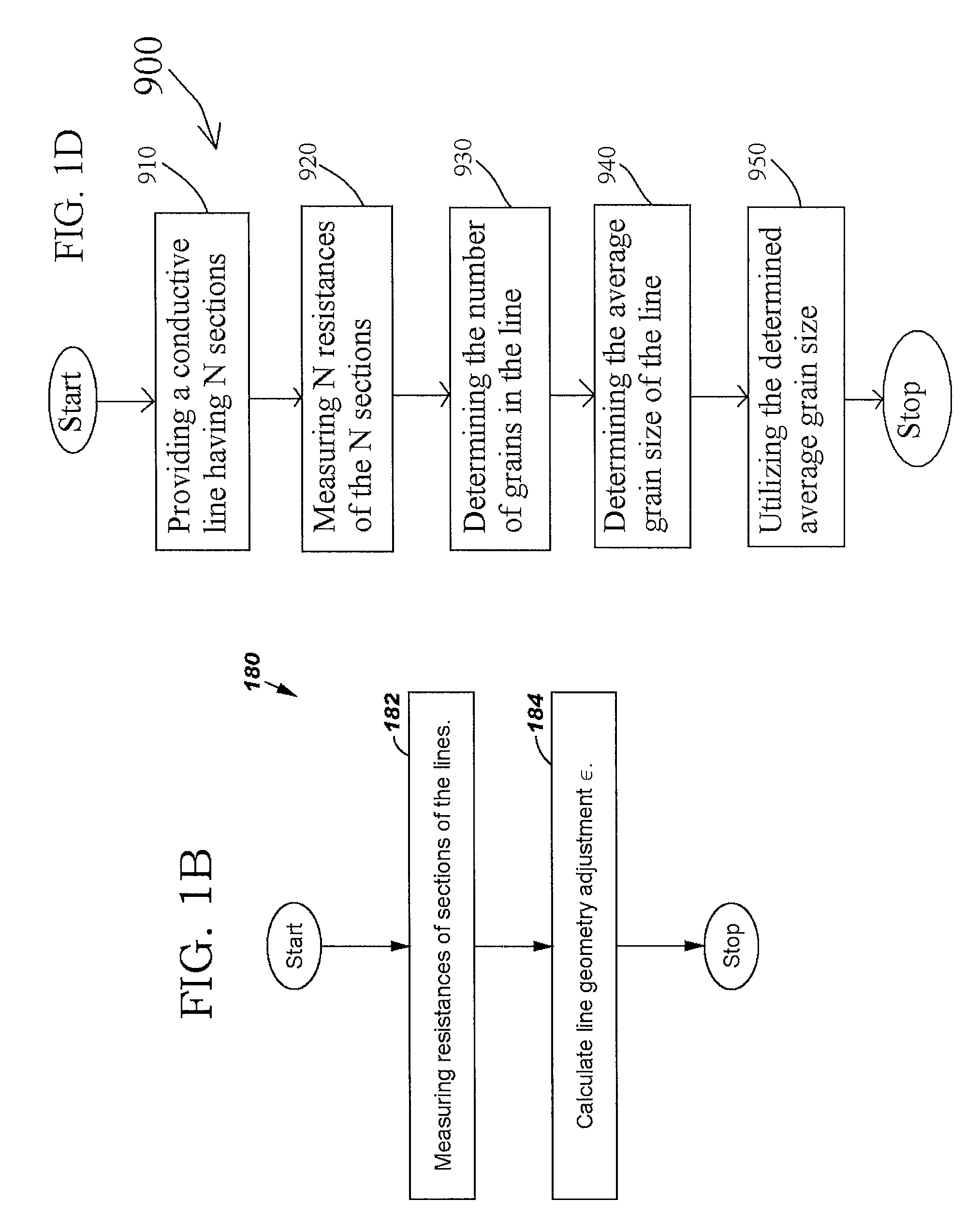Non-destructive evaluation of microstructure and interface roughness of electrically conducting lines in semiconductor integrated circuits in deep sub-micron regime
a semiconductor integrated circuit and microstructure technology, applied in the field of non-destructive evaluation of electrically conducting lines in semiconductor integrated circuits in deep sub-micron regime, can solve the problems of reducing the effect of geometries, degrading the benefit of small rc delay provided by cu and low-k insulation layers, and no simple, non-destructive methodology available to monitor integrated line surface. , the effect of reducing the cross-section size and reducing the thickness
- Summary
- Abstract
- Description
- Claims
- Application Information
AI Technical Summary
Benefits of technology
Problems solved by technology
Method used
Image
Examples
Embodiment Construction
[0013]FIG. 1A shows a top view of a macro 100 comprising a conducting line 110 used for (a) determining line geometry adjustment ε for the macro 100 due to grain boundary electrical resistance and (b) estimating the average grain size of the grains of the line 110, in accordance with embodiments of the present invention. More specifically, the line geometry adjustment ε represents an effective reduction of cross-section size (thickness and line width) of a line as a result of grain boundary electrical resistance.
[0014] In one embodiment, for illustration, the macro 100 can comprise the conducting line 110, eleven pads 120.0-120.10 (collectively referred to as pads 120) and eleven coupling lines 130.0-130.10 (collectively referred to as coupling lines 130) that electrically couple the pads 120 to the line 110. More specifically, the coupling line 130.i electrically couples the pad 120.i to the line 110, wherein i=0-10. In one embodiment, the points at which the 11 coupling lines 130...
PUM
 Login to View More
Login to View More Abstract
Description
Claims
Application Information
 Login to View More
Login to View More - R&D
- Intellectual Property
- Life Sciences
- Materials
- Tech Scout
- Unparalleled Data Quality
- Higher Quality Content
- 60% Fewer Hallucinations
Browse by: Latest US Patents, China's latest patents, Technical Efficacy Thesaurus, Application Domain, Technology Topic, Popular Technical Reports.
© 2025 PatSnap. All rights reserved.Legal|Privacy policy|Modern Slavery Act Transparency Statement|Sitemap|About US| Contact US: help@patsnap.com



